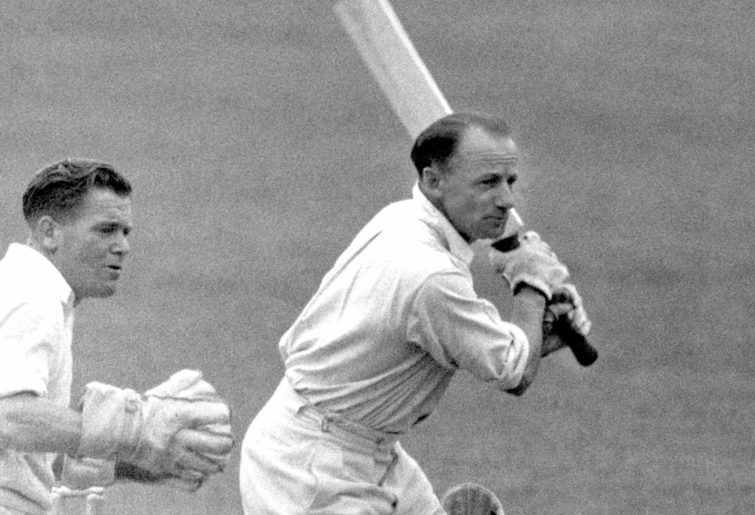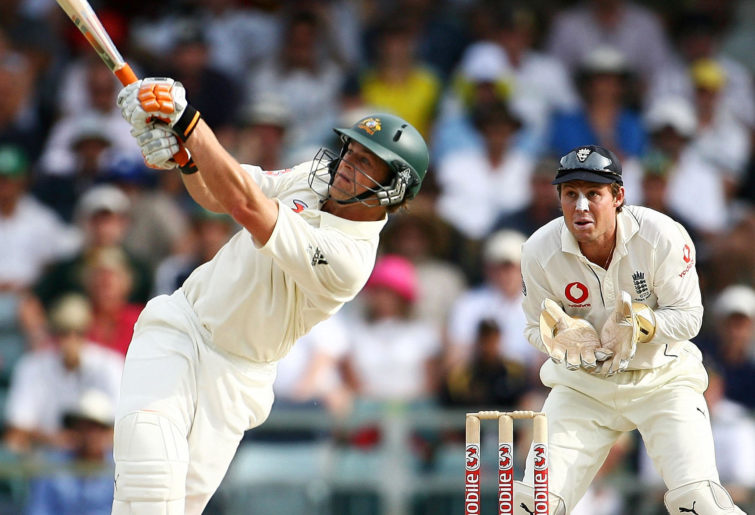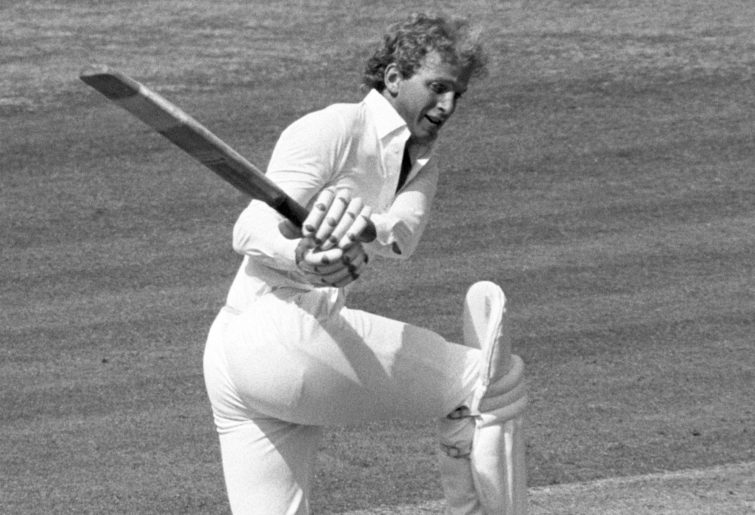In my previous article I examined the overall trends for home versus away performances for cricketing nations across history. This time I will delve a little deeper to try and solve the David Warner mystery.
Remember from my last article that the historical difference between home and away performances for top seven position batsmen is 10.6 per cent. Since 2000 this difference has grown to 15.1 per cent.
So how bad is David Warner away from home? Well he isn’t great. Warner has an extremely impressive home average of 63.2. With a cut off of 20 home innings this is the fourth best by an Australian, behind only Don Bradman, Marnus Labuschagne and Steve Smith. It is actually ranks Warner 15th on the world all-time list of home records, ahead of such greats as Brian Lara, Kumar Sangakkara and Sachin Tendulkar.
However, take Warner away from the comforts of home and his average plummets to 33.2, which is just over half of his home output. An away innings from Warner is expected to finish around 30 runs short of a home innings. Warner averages below 30 in all of England, India, Sri Lanka, New Zealand and the West Indies.
This away performance is, to be blunt, really bad. It would be much worse if we excluded Warner’s brilliant performances in South Africa where he averages 63.3. Of the 41 significant Australian batsmen I researched for this article the only better records in South Africa belong to the first ‘best since Bradman’ Neil Harvey, 1950s captain Lindsay Hassett and supercharged keeper-batsman Adam Gilchrist.
But we are talking about away records in total, so I’m happy to include Warner’s South African heroics.

(Photo by Cameron Spencer/Getty Images)
Is David Warner actually the worst home town hero of all time? Not even close. Actually scratch that, he was pretty close! There are only seven other players in history to have played at least 20 innings both home and away, where their away output compared to their home record is worse than David Warner’s 52.5 per cent.
Five are from Asia, including:
• 1950s Indian star VJ Hazare – 69.6 at home, 33.6 away (48.3 per cent)
• Butter-fingered Pakistan wicketkeeper Kamran Akmal – 56.7 and 23.7 (41.8 per cent)
• Current Bangladeshi captain Mominul Haque – 56.4 and 26.9 (47.7 per cent)
• 1980s Pakistan opener Mudassar Nazar – 53.6 and 26.6 (49.6 per cent)
An unexpected entry is West Indian unfulfilled star of the 1970s Lawrence Rowe, whose home average of 59.5 is streets ahead of his away mark of just 29.5 (49.6 per cent). Rowe was okay in England but terrible in Australia and New Zealand.
That leaves one other player. There is one Australian batsman who boasts an even more diabolical away record than David Warner (minimum 20 home innings) and that is Usman Khawaja.
Khawaja averages a majestic 53.0 at home and a terrible 24.4 away (46 per cent). That away average came after 18 Tests, so it’s not just a coincidence. Averages of 76 in the UAE and 69 in New Zealand are more than offset by his painful struggles in England (19.7), South Africa (24.2) and Sri Lanka (19.2). You would think there will be no tours in Khawaja’s future.

(Lindsey Parnaby/AFP/Getty Images)
But the grandaddy of all home town geniuses and away from home dunces is India’s current opening batsman and multiple ODI double centurion, Rohit Sharma. Sharma averages a ridiculous 79.5 at home and a truly dreadful 27 away. That is a difference of over 50 runs.
His away output is just 34 per cent of his home efforts. Rohit Sharma is the home town champion by a knockout.
Let’s look at some more general facts about home town heroes.
Firstly, if we have no qualification on number of matches, the best home town batsman in history is English left-hand batsman Phil Mead. Mead plied his trade between 1911 and 1928. He only played two innings in England and scored 229 for once out. Mead also holds the record for the greatest run differential between his home and away averages.
He played 15 Tests away from home and averaged 41.6, giving him a 187 run difference when batting away compared to home. Mead scored over 55,000 first class runs with 53 centuries. He also appeared once for Southampton as a goalkeeper.
There are ten other players who have averaged over 100 at home. None of them are called Bradman and none of them played more than five innings at home. Albert Trott, who played for both Australia and England, had the remarkable differential of 102.5 average at home and only 5.75 away. Is an away output of 5.6 per cent of home average the worst ever? Close but not quite.
In 1999, Indian opening batsman Devang Ghandi played five home innings and averaged exactly 50. Unfortunately his one match in Australia was a Glenn McGrath nightmare and he left the country with an away average of just two, only four per cent of his home average.
There are some current players who are potentially heading into Rohit Sharma territory. Rohit’s fellow Indian opener MA Agarwal currently averages a Bradman-esque 99.5 at home from just six innings. His away average from 17 innings across Australia, New Zealand and the West Indies stands at just 26.8.
The next great Pakistan batsman is potentially Babar Azam. His home average is 87.83 from eight innings, but he is merely mortal away from home, averaging 34.84 from 36 attempts. Very good records in England and New Zealand (averaging 65.8 and 47.3 respectively) indicate that this anomaly may be dealt with over time.
The best home average with a cut off of at least 20 innings is of course Sir Donald Bradman at 98.22. He is also by far the player with the highest home average to also have an away average that is even better: 102.84, all from Tests played in England. This makes Bradman also the best away player with a 20-innings cut off.

(PA Images via Getty Images)
With no qualification, the best away batsman of all time is Englishman Colin Milburn, who scored 139 in his only away innings, in Pakistan in 1969. This turned out to be Milburn’s final Test innings, as he suffered serious damage to his eyesight in a motor vehicle accident at the beginning of the following season.
Milburn did get eight home Tests, where he averaged a tick under 40. He also played a couple of season for Western Australia, highlighted by a swashbuckling 181 scored between lunch and tea against Queensland.
Now that we have established that David Warner is not, in fact, the worst away player of all time – although he definitely tries his best to get there – let’s look at who are the best players in various home-and-away scenarios.
Firstly, if I want a top seven to represent Australia in home conditions, I can’t go past this group.
David Warner (63.2 from 79 innings)
Matt Hayden (57.88 from 98)
Don Bradman (98.22 from 50)
Steve Smith (67.72 from 65)
Marnus Labuschagne (72.55 from 20)
Michael Clarke (62.05 from 86)
Adam Gilchrist (45.87 from 75)

(Photo by Ryan Pierse/Getty Images)
What opposition could possibly match these great home players? Here is a team with pretty handy records in Australia (no strict innings cut off here as not all players get multiple chances to tour).
Jack Hobbs (England) (average 57.97)
Herbert Sutcliffe (England) (63.7)
Kumar Sangakkara (Sri Lanka) (60.33)
Wally Hammond (England) (61.9)
Ken Barrington (England) (69.73)
Martin Crowe (New Zealand) (66.92)
Rishabh Pant (India) (62.4)
Which Australians will carry us when we leave for foreign shores?
Arthur Morris (53.78 from 33 away innings)
Bill Brown (50.7 from 28)
Don Bradman (102.84 from 30)
Steve Smith (60.15 from 66)
Allan Border (56.57 from 120)
Steve Waugh (55.85 from 116)
Adam Gilchrist (50.24 from 58)

(Photo by Paul Kane/Getty Images)
Note that both Gilchrist and Bradman have away records that eclipse their home efforts. While uncommon this is not as rare as you might think. Bradman-era opener Bill Ponsford didn’t make the innings cut off for the above side, however he averaged a healthy 40.89 at home, which was dwarfed by his efforts abroad where he went at 62.4 from 16 innings. That means his away output was nearly 53 per cent above his home results.
Others such as Stan McCabe and Neil Harvey also had significantly better away records. The 1970s opening bat Rick McCosker had a remarkable away record. The man with the swollen jaw only averaged 30.2 at home but his overseas mark of 54.18 from 19 innings was nearly 80 per cent higher than his home record.
But even this is dwarfed by the Western Australian, Marcus North. North was not really appreciated by the Australian fans, but then his home average of just 21.3 from 12 innings didn’t exactly demand respect. However, put North on a plane and he averaged 51.7 with five centuries from just 19 away innings.
But really there are many varied conditions away. The Australian line-up above would brain them in England. But what about our great Achilles heel, the subcontinent?
Well here is a team that could get the job done in Asia.
Matt Hayden (average in Asia 48.86 from 31 innings)
Mark Taylor (48.57 from 24)
Dean Jones (49.35 from 17)
Norm O’Neil (57.63 from 14)
Allan Border (54.51 from 39)
Mike Hussey (63.05 from 19)
Adam Gilchrist (36.78 from 21)
Other great players of Asian conditions that didn’t meet the innings threshold included Bob Simpson who averaged 70, but only from eight innings, Greg Chappell with 74.5 from six innings (I wonder why he mostly skipped tours there?) and Greg Matthews. While famously bowling in a sweater in ridiculous heat on Day 5 of the famous Madras tied Test, Matthews also had a handy batting average in Asia of 52.5 from nine innings.
There are two standout players from around the world who thrived in Asian conditions, being the only players ever to average over 60 in Asia from more than 20 innings. They are West Indian bespectacled captain Clive Lloyd, who averaged 62.65 from 31 innings in Asia, and New Zealand captain Stephen Fleming (65.45 from 29 innings). To show how hard it can be touring there, only 12 other players average over 50 (with that 20-innings cut off), including greats like Jaques Kallis, Brian Lara, Alastair Cook and David Gower.

(Photo by PA Images via Getty Images)
They are somewhat surprisingly joined by current West Indian Darren Bravo. Bravo averages a very impressive 56.7 in Asia, but he has often been treated badly by selectors, given a home average of just 26.8.
If we remove any innings qualification cut off, then three truly amazing players of Asian conditions stand out. Jimmy Adams of the West Indies averaged 173.3 from his six innings. His famous predecessor Everton Weeks averaged 111.3 in seven innings and legendary English stonewaller Ken Barrington averaged 90.3 from 13 innings.
At the other end of the spectrum, current South African keeper Quinton de Kock has yet to crack the code in Asia, averaging just 19.9 from 19 attempts.
Just for completeness, which players from Asia are the best in non-Asian conditions?
There are only three Asian players who average over 50 in non-Asian conditions, and they are three of the very, very best from India: Sachin Tendulkar (50.4 from 135 innings), Sunil Gavaskar (51.6 from 81) and Rahul Dravid (54.6 from 124). They could be joined in a hypothetical top six by Javed Miandad (Pakistan, 46.4), Kumar Sangakkara (Sri Lanka, 47.6) and Mohinder Amarnath (India, 48.4). It seems that being technically perfect allows a batsman to prosper in all conditions.
I will give one more final shout out to two players who it appears did not care whether they were in their own beds or stuck in a hotel room. Clive Lloyd had a home average of 46.8 and an away average of 46.5, while enigmatic stroke maker Damien Martyn averaged 47.3 in Australia and 46.9 elsewhere.
I’ve gone on way too long on this topic, but if you would like information on how your particular favourite historical player fared in different countries or you are looking, for example, for a New Zealand batting line-up to play in Sri Lanka, let me know in the comments, and I’ll see what I can do.


































































































